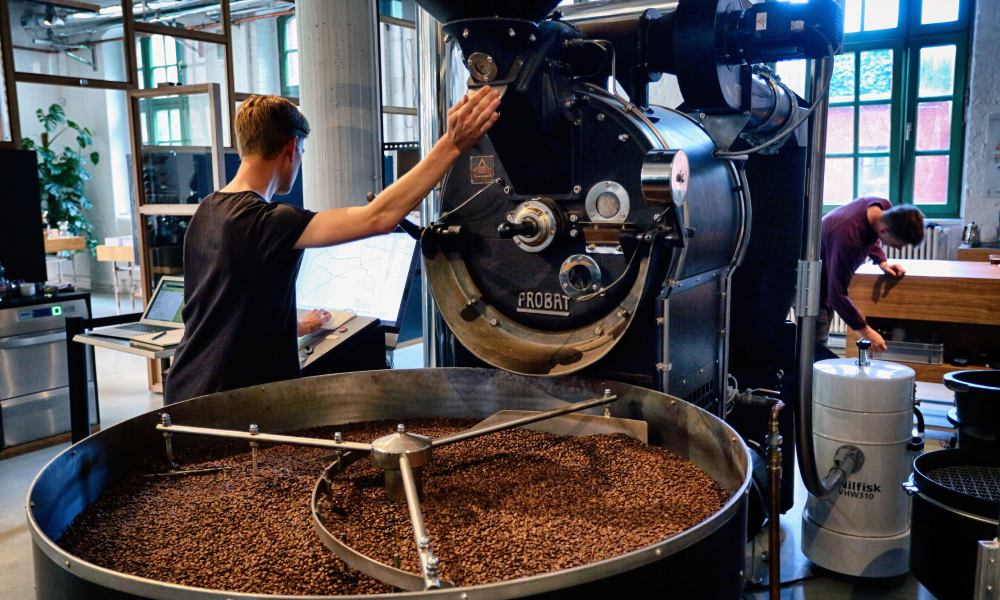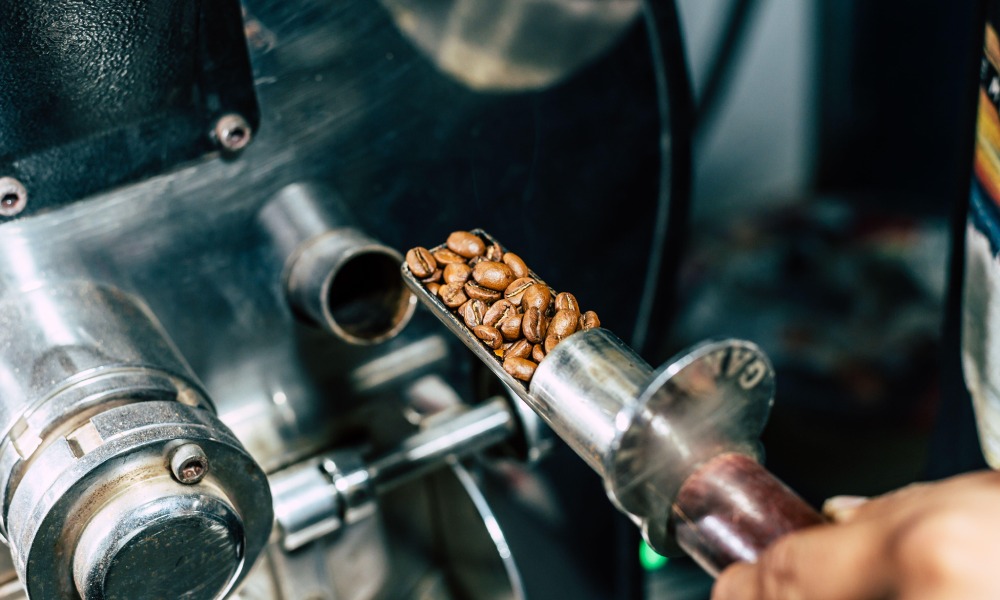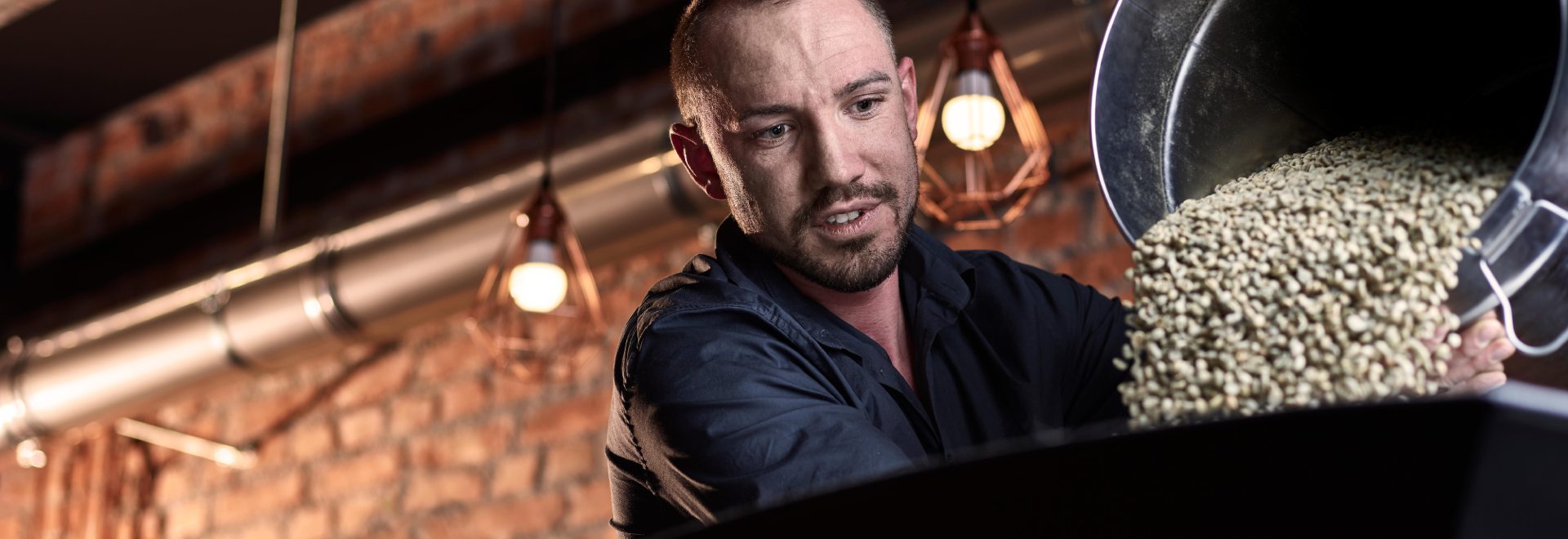Breaking down how to roast coffee blends
Ashe Samuels speaks with Stephen Gray about two fundamental approaches to roasting coffee blends.
For many years, blends were arguably disregarded in the specialty coffee community. However, having featured in the winning routine of this year’s World Barista Championship, this is no longer the case.
Blends weren’t avoided for so long for no reason. They can be challenging to work with and can lack the clarity of flavour found in single origin coffee. So has the specialty coffee community reverted backwards, or has the way we roast blends developed?
A roaster must first choose blend components – typically including a base note, a mid-palate note, and a high note. Following that, they need to establish a ratio that will create a balanced profile.
However, certain factors can make this hard to achieve. For example, blending two or more coffees that have different bean sizes or densities could result in uneven roasting – with at least one component either under or over-roasted.
This is a common criticism of blends – they are often seen as too much of a broad brushstroke approach, especially when trying to create the nuance that specialty coffee demands. However, some argue that there is room for flexibility while still creating delicious blends.
“I wouldn’t say all components need to have uniform density and bean size,” says Stephen Gray, head roaster at Redemption Roasters. “Certainly less so density. Bean size will contribute to it, but I think you can easily switch up or down by a size or two and still roast blends quite successfully.”
In addressing the challenges of roasting coffee blends, there are two fundamental approaches – blending coffee before you roast, or blending afterwards.

Pre-blend roasting
Pre-blending could be considered the riskiest method in terms of under or over-roasting individual components. Variations in bean sizes, varieties, regions, and even processing methods, can mean that coffees will roast at different paces.
However, some roasters argue that pre-blending encourages “interchange” – a process where coffee beans exchange and absorb each other’s flavours and aromas during the roasting process.
Additionally, pre-blending is a time-saving option as roasters can combine all the coffee into one batch.
“One of the biggest advantages of pre-roast blending is the logistical advantage,” Stephen says. “You can basically control batch size per blend, rather than working out how many of X component and how many of Y component you need to build up a blend.”
Ultimately, pre-blending is well-suited for roasters with high volume demands or when beans have similar physiologies. While no two coffees will roast identically, this approach can often lead to more consistent blends.

Post-blend roasting
On the other hand, with post-blending, the roaster can tailor a specific profile for each component. Many believe this preserves the distinct characteristics of each coffee while minimising the risk of irregular bean development.
“The argument against pre-roast blending is that you lose the ability to create the nuance between the individual components,” says Stephen. “You’re not roasting any of them to their best potential.”
However, Stephen suggests that there are still limitations to this argument.
“I mean, that argument taken to its conclusion realistically means you ought not to be blending until you brew their individual components, then you mix them in the cup,” he says.
“If you’re post-roast blending, it’s because you want to bring out the best in each component in the roast, but they’re going to react differently in the grinder to each other.
“As soon as they go into the espresso machine, the shots are going to pull slightly differently depending on the ratio of components.”
However, according to Stephen, post-blending offers greater flexibility for roasters. When working with new coffees and untested blends, it enables them to adjust ratios in real time, making it a more reactive approach.
“On the other hand, if you have an issue with your blend, if you’re changing components, or if you detect something that’s problematic in the cupping, you can isolate what that problem is a lot more easily with post-roast blending,” he says. “You can figure out what component is causing that problem and adjust the roast accordingly.”
Both approaches have their merits, and choosing the right one depends on the individual business and its customers. Overall, blends offer consistency and potentially lower costs. However, they could be seen as more than this – operating in a creative space beyond roasting coffee from one lot or origin.
With clear appeal for businesses to integrate them more extensively, blends could be an area of further innovation within specialty coffee.
New Ground Coffee
Want to read more articles like this? Sign up for our newsletter!







